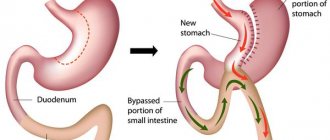Today, in the era of high development of information technology and, thereby, active popularization of knowledge about various diseases of the population, incl. During pregnancy, improving family planning methods, it is relevant to increase the knowledge of women planning pregnancy about the risk of developing gestational diabetes mellitus in order to timely seek medical help in highly qualified medical institutions, where this problem is dealt with by doctors with extensive clinical experience in managing such patients.
What is its reason?
Diabetes mellitus in pregnant women develops due to the hormonal explosion associated with bearing a child. The hormonal cocktail entering the blood (cortisol, human chorionic gonadotropin, estrogens and progesterone) inhibits the action of insulin, which is required to ensure the flow of glucose from the blood into the cells. This happens because the body tries to save glucose for the growing fetus and provokes “insulin resistance,” when the mother’s cells stop responding to the usual amount of insulin. In response to increasing amounts of glucose in the blood, the pancreas is supposed to produce more insulin, but sometimes it fails. Gestational diabetes occurs.
Up to 39% of all pregnancies are complicated by GDM.
Physical activity for gestational diabetes in pregnant women
Physical exercise is very beneficial for pregnant women, because, in addition to maintaining muscle tone and maintaining a cheerful state of health, it improves the action of insulin and prevents the accumulation of excess weight. Naturally, physical activity for pregnant women should be moderate and consist of walking, gymnastics, and water exercises. You should not overuse active physical activity, such as cycling, skating, or horse riding, as this can lead to injury. It is important to regulate the amount of exercise based on your current state of health.
Who's at risk
Risk factors for gestational diabetes
| Risk factor | Consequences |
| Mother's age is over 40 years old | Large fruit |
| Maternal obesity, or excess body weight | Polyhydramnios |
| History of gestational diabetes | Excessive weight gain during current pregnancy |
| History of early or late gestosis | Congenital malformations of the fetus |
| Diabetes mellitus in close relatives | Excretion of glucose in urine |
| History of miscarriage or stillbirth | |
| Diseases and conditions that can provoke the development of diabetes (metabolic syndrome, polycystic ovary syndrome, high blood pressure, high cholesterol) | |
| Multiple pregnancy |
Why is GDM dangerous?
GDM can cause various pregnancy complications, which is dangerous for both mother and baby.
Danger of GDM for mother
The health risk to the expectant mother is associated with excess glucose in the blood and its deposition in tissues and organs. Like any type of diabetes, GDM can contribute to:
- Diabetic retinopathy – damage to blood vessels and retinal receptors with gradual deterioration of vision (Fig. 1).
- Diabetic nephropathy is damage to the glomerular and tubular apparatus of the kidneys, in which blood plasma is filtered to form urine. As a result, chronic renal failure develops.
- Arterial hypertension is high blood pressure that occurs due to damage to blood vessels, kidneys and changes in hormonal levels with the development of diabetes. All this increases the risk of miscarriage and abnormalities in the fetus.
Figure 1. Diabetic retinopathy. Source: WikiMedia
Risk to the child
An increased level of glucose in the blood of a pregnant woman can harm not only herself, but also the unborn child, contributing to:
- diabetic fetopathy (a disorder of carbohydrate metabolism in an unborn child, which can develop into neonatal, infant diabetes mellitus);
- the birth of a large fetus - macrosomia (increases the risk of cesarean section and injury to the child during childbirth);
- neonatal hypoglycemia (low blood sugar in the newborn and respiratory problems, which can lead to death);
- intrauterine fetal death (this is the worst consequence of GDM);
- polyhydramnios (dangerous due to premature birth, incorrect position of the fetus, loss of umbilical cord loops and their compression, placental abruption due to rupture of the membranes);
- an increase in the size of the liver and heart in the fetus.
- disruption of the growth and development of the child after birth.
GDM also increases the risk of miscarriage - the blood vessels of the placenta are “saturated” with glucose, which leads to impaired blood flow and hypoxia (oxygen starvation) of the fetus, which provokes premature labor in the uterus.
Symptoms
Photo: ruslangaliullin / freepik.com
The clinical picture of gestational diabetes mellitus is quite poor; a woman may not have any complaints at all. It is worth paying attention to the following signs:
- Unmotivated weakness
- Thirst, dry mouth,
- Frequent urination
- Blurred vision.
Gestational diabetes mellitus: causes, symptoms, treatment
Gestational diabetes mellitus
is a type of diabetes that occurs or is first diagnosed during pregnancy.
The basis of the disease is a violation of carbohydrate metabolism of varying degrees, namely a decrease in glucose tolerance in the body of a pregnant woman. It is also commonly called gestational diabetes
.
The results of epidemiological studies conducted in the USA showed that gestational diabetes mellitus develops in 4% of all pregnant women. European researchers have announced data according to which the prevalence of gestational diabetes mellitus
ranges from 1-14% of the total number of pregnancies. About 10% of women after childbirth remain with signs of the disease, which subsequently transforms into type 2 diabetes mellitus. According to statistics, half of women who have gestational diabetes mellitus during pregnancy develop type 2 diabetes mellitus over the next 10-15 years.
Such high rates of prevalence of this pathology and possible complications indicate low awareness among women about the possible risks of developing gestational diabetes mellitus and its consequences, and, as a consequence, late seeking diagnosis and qualified help. To ensure timely detection of the disease, reproductive centers for family planning and antenatal clinics are currently carrying out active educational work to preserve the health of women and contribute to the birth of healthy offspring.
Analyzes and their indicators
Usually, when registering, at a period of 10-13 weeks, all women undergo health screening, which should identify the main abnormalities of pregnancy, including disorders of carbohydrate metabolism. As part of this screening, a study of the level of glycated hemoglobin is carried out, as well as a study of venous plasma glucose on an empty stomach and during the day. This test allows you to determine whether a woman had diabetes before pregnancy. For the diagnosis to be confirmed, the value of glycated hemoglobin must exceed 6.5%.
Between 24 and 28 weeks of pregnancy, women in whom no abnormalities were previously detected are given a repeat test to determine gestational diabetes (Fig. 2). This analysis is called the “glucose tolerance test” and is carried out according to the following scheme:
- In the morning, a woman donates blood for glucose on an empty stomach,
- Then she is given a concentrated glucose solution (75 g of glucose) to drink.
- 1 and 2 hours after the load (drinking the solution), a repeat blood test is performed.
Figure 2. Conducting a glucose tolerance test.
Source: CC0 Public Domain Test results are considered positive if at least one of the following signs is detected:
- Fasting glucose level is above 5.1 mmol/l,
- Glucose level 1 hour after exercise is above 10.0 mmol/l,
- Glucose level 2 hours after exercise is above 8.5 mmol/l.
Important! ONLY the glucose tolerance test is suitable for diagnosing GDM.
The glycated hemoglobin test is not used, since this test often gives a false negative result. In addition, it cannot be used to track the degree of increase in blood glucose after eating.
Are there any contraindications to the test?
Yes, I have. Absolute and relative.
Absolute contraindications include:
- Allergy and/or glucose intolerance,
- Diabetes mellitus in the acute phase (then a test is not needed),
- Diseases of the gastrointestinal tract in which normal glucose absorption is disrupted (exacerbation of pancreatitis, gastric surgery).
Relative (temporary) contraindications:
- Early toxicosis (gestosis) of pregnant women,
- Exacerbation of chronic diseases
Important! It is very important to determine the presence of GDM in a timely manner. Screening is recommended for all pregnant women. The glucose tolerance test does not harm the liver and is not something to be afraid of.
When diagnosing GDM, additional tests are sometimes used, including:
- General urine analysis (glucosuria - detection of glucose in the urine, which normally should not be there, as well as ketone bodies - products of impaired glucose metabolism),
- Ultrasound of the fetus (presence of fetopathy - fetal development disorders).
Treatment during pregnancy
Treatment of GDM is a complex and complex task. The drugs are selected so as not to harm the fetus. And treatment, if necessary, can continue after childbirth.
Diet
Following a special diet is the first step towards getting rid of gestational diabetes. Drug treatment for GDM will not be effective without diet. What you need to pay attention to:
- It is necessary to exclude fast carbohydrates (sweets, pastries, white bread, cakes, fruits), and also limit fats,
- There should be several meals, you should eat every 2-3 hours,
- You should consume enough protein and reduce your intake of foods high in starch (rice, bread, pasta, potatoes, corn),
- It will be useful to increase the consumption of vegetables and herbs, vegetable oils and other foods rich in unsaturated fats,
- It is important to maintain a balance of proteins, carbohydrates and fats, as well as monitor the caloric content of your diet.
Important! You can’t prescribe your own diet! It should be compiled by a specialist taking into account the needs of the expectant mother and baby.
In addition to dietary changes, incorporate moderate, regular physical activity into your daily routine. Exercise at least 150 minutes a week; swimming is very beneficial.
Blood Sugar Tracking
The second step in the fight against GDM is daily monitoring of blood sugar. It is needed to understand whether the diet helps.
To determine your glucose, you do not need to go to the doctor; for this there is a special device - a glucometer (Fig. 3).
Figure 3. A set of a glucometer, a skin-piercing pen, a set of test strips and needles for a cartridge pen. Source: WikiMedia
With its help, patients with GDM check their glucose levels on an empty stomach and 1-2 hours after meals every day for a week, recording the data in a journal. Based on the results obtained, the endocrinologist decides whether drug treatment is required, or whether GDM has already been controlled through dietary restrictions. Medicines are prescribed if one third or more of the results indicate glucose levels:
- on an empty stomach - more than 5.3 mmol/l,
- an hour after eating - more than 7.2-7.8 mmol/l,
- 2 hours after eating - more than 6.5 mmol/l.
Sometimes your doctor will also ask you to keep a diary of your blood pressure, body weight, and nutrition. You can also monitor sugar in your urine using test strips.
Important! Devices without a needle have already appeared - it is replaced by a sensor in the form of a patch that is glued to the skin. The glucometer reads its readings continuously. You can configure the device so that the data is sent to your mobile phone or immediately sent to the doctor.
Drug treatment: insulin
To control glycemic levels, hypoglycemic drugs are prescribed:
- In case of uncontrolled glycemia and the presence of fetopathy, insulin is used first. It is safe for the fetus; the dose and mode of administration are determined by the endocrinologist on an individual basis.
- In some cases, an insulin pump is installed for better glycemic control.
- Tablets of hypoglycemic drugs are used strictly according to indications.
During treatment, blood sugar control is not interrupted; all data on drug doses and blood glucose levels are recorded so that the doctor can adjust the dosage regimen.
Important! Insulin is considered the best treatment for GDM. To date, there is not enough data to judge the delayed effects of other glucose-lowering drugs.
Diet of patients with gestational diabetes mellitus
Diabetes mellitus during pregnancy requires mandatory diet therapy, since proper nutrition can be the key to successful treatment of this disease. When developing a diet, it is important to remember that the emphasis should be on reducing the calorie content of food, without reducing its nutritional value. Doctors recommend following a number of simple but effective recommendations regarding diet for GDM:
- eat small portions at the same hours;
- exclude from the diet fried, fatty foods rich in easily digestible carbohydrates (cakes, pastries, bananas, figs), as well as instant foods and fast food;
- enrich the diet with porridges from various cereals (rice, buckwheat, pearl barley), salads from vegetables and fruits, whole grain bread and pasta, i.e. foods rich in fiber;
- eat lean meats, poultry, fish, exclude sausages, sausages, smoked sausages, which contain a lot of fat
- cook food using a small amount of vegetable oil;
- drink enough liquid (at least one and a half liters per day).
After childbirth
Gestational diabetes is a disease characteristic of pregnancy. After childbirth, GDM goes away as hormonal levels return to normal.
However, we must not forget that GDM is a risk factor for the development of type 2 diabetes mellitus and recurrent disease during the next pregnancy.
Immediately after birth, if insulin therapy was prescribed, it is canceled. During the first days, glucose levels are monitored by collecting venous blood. If there are no abnormalities, a glucose tolerance test is performed 6–12 weeks after birth to rule out type 2 diabetes.
If GDM was diagnosed during pregnancy, it is necessary to follow a diet and engage in dosed physical activity. Otherwise, there are no restrictions; after GDM you can breastfeed as usual.
Diagnosed diabetes
Even before the onset, the woman had diabetes mellitus type 1 or 2, she was notified of the presence of this disease and was treated for it under the supervision of a doctor. Comprehensive preparation for the upcoming pregnancy comes to the fore; during the gestation period, it is necessary to undergo diagnostics on a regular basis, visit a medical facility for observation, contact a gynecologist and endocrinologist, another mandatory condition is to undergo an examination in a hospital setting. You can make an appointment in the gynecology department for a paid appointment on our clinic’s website or by phone, choosing a suitable day for a visit to a specialist.
Forecast
Timely treatment of GDM with insulin reduces the risk of complications by 98%. Severe consequences after the disease are observed if the diagnosis is not made in time and there is no treatment.
Important! GDM occurs unnoticed, but can cause great harm to the child, causing:
- various fetal malformations,
- Macrosomia (large fetal size),
- Hypoglycemia and respiratory disorders in a newborn,
- Cardiovascular and neurological diseases,
- Metabolic syndrome (carbohydrate metabolism disorder).
The worst outcome is intrauterine fetal death and miscarriage.
However, GDM increases the risk of developing type 1 and type 2 diabetes in the future. The probability of developing type 1 diabetes is 5.7% over the next 7 years, type 2 - up to 50%.
A child born to a mother with GDM also has an increased risk of obesity and diabetes.
How does gestational diabetes during pregnancy differ from other types of diabetes?
Diabetes mellitus is a disease characterized by a gross disturbance of carbohydrate metabolism due to insufficiency of the pancreatic hormone - insulin - in the blood, which can be absolute or relative. Diabetes mellitus is almost always accompanied by an increased level of glucose in the blood - hyperglycemia and the detection of sugar in the urine - glucosuria. According to WHO, there are several types of diabetes.
Type 1 diabetes mellitus occurs in childhood and adolescence as a result of the autoimmune breakdown of specific pancreatic cells that produce insulin, which leads to a decrease or complete cessation of its production. Type 1 diabetes mellitus occurs in 15% of all patients with diabetes mellitus. The disease is detected when a high starting level of glucose is detected in the blood at a young age, and antibodies to β-cells and insulin can also be detected in the blood. The level of insulin in the blood in such patients is reduced. To treat patients with type 1 diabetes, insulin injections are used - unfortunately, there are no other ways.
Type 2 diabetes mellitus more often develops in overweight people in the second half of life against the background of genetic defects, previous infectious diseases, acute and chronic pancreatitis, and taking certain medications and chemicals. The disease is characterized by a hereditary predisposition. Laboratory diagnostics show an increase in glucose levels in the blood of patients (>5.5 mmol/l). Treatment of such patients consists of prescribing a special diet, physical activity and taking medications that lower blood glucose levels.
Prevention
Photo: olezhkalina / freepik.com
The main measure to prevent GDM is weight control and careful planning of pregnancy.
Obesity is one of the main risk factors for the development of GDM. The more fat there is in the body, the less responsive its cells become to insulin's commands to capture glucose from the blood.
Important! Trying to lose weight during pregnancy is not worth it. You must eat enough so that the fetus does not suffer from lack of nutrients.








